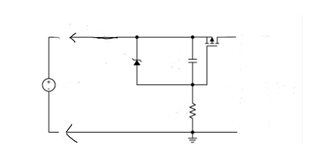Other Parts Discussed in Thread: , TINA-TI, TPS24771
Hey TI team,
I am using LM27402 for a 5V 20A circuit. I wanted to know what is the significance of Rin and how its value is decided?
How much input current can the Vin pin handle?
When the input source is a high current low voltage source, what should be the value of the input capacitor be?
How to avoid high inrush current in the IC at startup?




